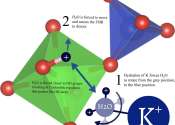Machine learning algorithm could offer urologists a 'crystal ball' for predicting VUR
Hydronephrosis is a common congenital anomaly that is increasingly identified during prenatal ultrasound. Although ultrasound is also the first-line test to screen for hydronephrosis in infants, it is poor at determining ...
Apr 5, 2024
0
2









